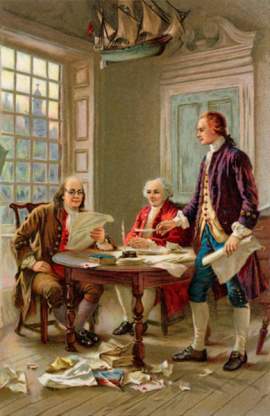
Major Decisions-Texas v. Johnson

Popular In Constitution
Purpose Of Lifetime Appointment And Pros And Cons Enumerated Powers Bicameral Legislature Background Article 3 Of The Constitution We The People 1st Amendment Who Wrote The Constitution Judicial Review Equal Protection Clause Three Fifths Compromise 10th Amendment 5th Amendment
The Supreme Court has on various occasions dealt with cases that have the First Amendment at the crux of the dispute. In other Supreme Court Cases, the judgments rendered have proven that the First Amendment and the Freedom of Speech are not constricted to that of the written and spoken word, but also extend to symbolic speech as well. Texas v. Johnson is yet another Supreme Court case in which the application and interpretation of First Amendment rights is at the heart of the dispute.
Texas v. Johnson deals with quite a controversial issue, one that
continues today. Gregory Lee Johnson was participating in a demonstration that
was denouncing and protesting some of the policies incurred by the Reagan
Administration. In a form of protest, Johnson managed to get his hands on an
American flag and proceeded to douse it in kerosene and light it ablaze. Though
many of his protesting comrades understood the symbolism behind his actions and
probably applauded him for it, there were many others who were just as
disgusted and offended.
The issue brought civil penalties against Johnson, including a $2,000 fine, as well as a year in prison. The conviction was brought on appeal to Texas State courts. The first appeal was rejected, but Johnson's second appeal to yet a higher State court overturned the conviction. The decision was based upon his actions being protected under First Amendment rights.
The State of Texas then brought
the matter to the Supreme Court, under the argument that the flag was a
national symbol and that flag burning was not only a desecration of national
unity, but also a breach of peace. Furthermore, Texas had State laws and
statutes that prohibited flag burning. Texas was one of the many states having
similar provisions, with the exception of only two states in the country not
imposing such regulations.
The Chief Justice at the time was William Rehnquist, who would be
responsible for presiding over Texas v. Johnson. The Supreme Court eventually
rendered a decision in one of the most closely decided and controversial
decisions of the Supreme Court. The decision rendered concluded that Johnson's
flag burning was Constitutionally-protected under First Amendment rights.
The Court held that even though such an act was not a verbal or written speech, is was protected under the concept of symbolic speech. A similar decision was arrived at in a previous landmark Supreme Court case in Tinker v. Des Moines. Furthermore, the Supreme Court would also state that regardless of the State of Texas' intents of preserving unity and protecting a national symbol, they were not valid arguments for the case.
Concurrently, the Supreme Court
would also strike down the State's argument regarding the breaching of the
peace. Since Johnson's flag burning did not actually harm anyone or threaten
danger to the community, no disturbance or breach of peace actually took place.
The Court did state, however, that flag burning could be punishable by law in instances
where it constitutes an actual danger or lawless action. Though flag burning,
as an action, will not always present such a circumstance and its potential for
such can be grounds to punish the act, flag burning must be actual and readily
identifiable as a real threat or lawless action.
The consequences of Texas v. Johnson still have effects today, for
the issue still remains controversial. On the Constitutional level, Texas v.
Johnson has incited several bills proposed by Congress (See Also: The
Constitution-Article I) that would prohibit flag burning in the United States on
a national level. A law by Congress did manage to get passed, but was
eventually struck down by the same five person majority of Justices that tried
the Texas v. Johnson case.
NEXT: Major Decisions-Tinker v Des Moines





















